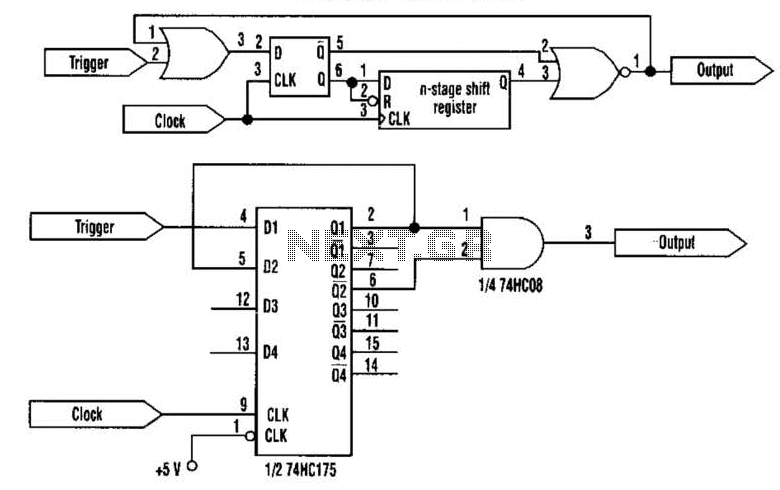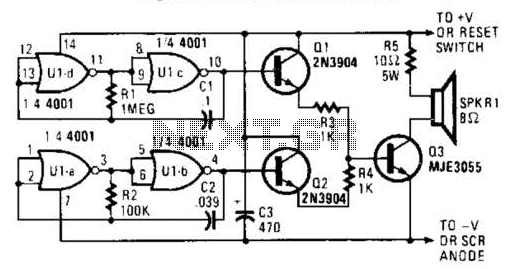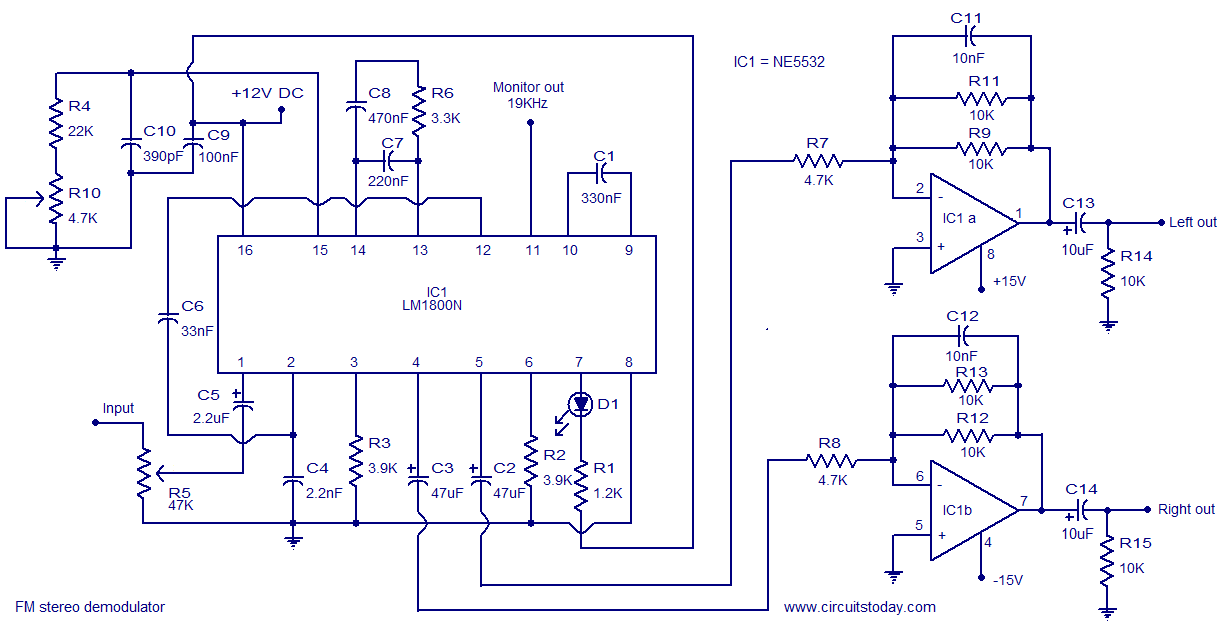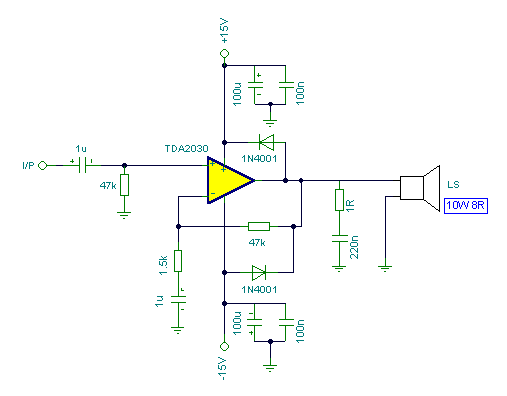
Piezo Micropositioner Driver Circuit
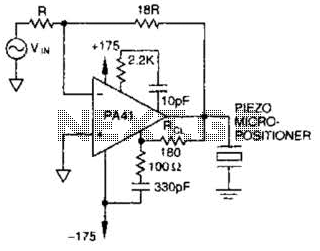
The PA41 from Apex Microtechnology is utilized to drive a piezoelectric micropositioner. The drive voltage is less than 20 V peak-to-peak at the input.
The PA41 is a high-performance power amplifier designed specifically for driving piezoelectric devices, which require precise control of voltage and current to achieve accurate positioning. This amplifier is capable of delivering a high output voltage, which is essential for the operation of piezoelectric micropositioners that typically operate within a limited voltage range.
In the context of a piezoelectric micropositioner, the PA41 amplifies the input signal to produce a drive voltage that can effectively control the micropositioner's movement. The specification of a drive voltage of less than 20 V peak-to-peak indicates that the amplifier is being used within a safe operating range, ensuring that the piezoelectric element is not subjected to excessive voltage that could lead to damage or non-linear behavior.
The circuit configuration would typically involve connecting the output of the PA41 to the input terminals of the piezoelectric micropositioner, while the input of the PA41 would be connected to a signal source that provides the control signal. This setup allows for dynamic control of the micropositioner's position, enabling applications in fields such as optics, robotics, and precision manufacturing.
To ensure optimal performance, it is crucial to consider factors such as the power supply requirements for the PA41, the bandwidth of the input signal, and any necessary feedback mechanisms to stabilize the system. Additionally, proper thermal management should be implemented to maintain the reliability of the amplifier during extended operation. Overall, the PA41 serves as a robust solution for driving piezoelectric micropositioners, facilitating precise and controlled movements in various applications. The PA41 from Apex Microtechnology is used here to drive a piezoelectric micropositioner. The drive voltage is less than 20 V p-p at input.
The PA41 is a high-performance power amplifier designed specifically for driving piezoelectric devices, which require precise control of voltage and current to achieve accurate positioning. This amplifier is capable of delivering a high output voltage, which is essential for the operation of piezoelectric micropositioners that typically operate within a limited voltage range.
In the context of a piezoelectric micropositioner, the PA41 amplifies the input signal to produce a drive voltage that can effectively control the micropositioner's movement. The specification of a drive voltage of less than 20 V peak-to-peak indicates that the amplifier is being used within a safe operating range, ensuring that the piezoelectric element is not subjected to excessive voltage that could lead to damage or non-linear behavior.
The circuit configuration would typically involve connecting the output of the PA41 to the input terminals of the piezoelectric micropositioner, while the input of the PA41 would be connected to a signal source that provides the control signal. This setup allows for dynamic control of the micropositioner's position, enabling applications in fields such as optics, robotics, and precision manufacturing.
To ensure optimal performance, it is crucial to consider factors such as the power supply requirements for the PA41, the bandwidth of the input signal, and any necessary feedback mechanisms to stabilize the system. Additionally, proper thermal management should be implemented to maintain the reliability of the amplifier during extended operation. Overall, the PA41 serves as a robust solution for driving piezoelectric micropositioners, facilitating precise and controlled movements in various applications. The PA41 from Apex Microtechnology is used here to drive a piezoelectric micropositioner. The drive voltage is less than 20 V p-p at input.
